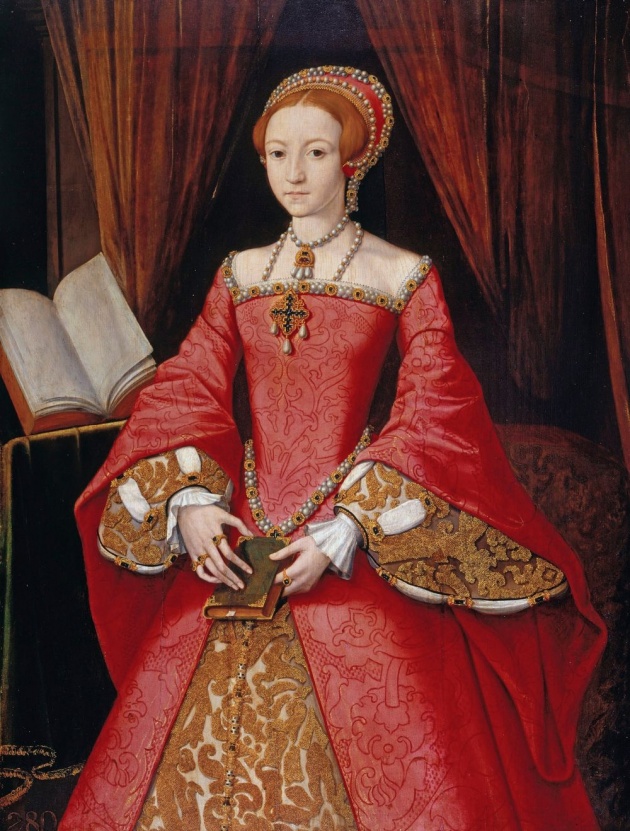
TROUBLES WITH THE NEIGHBOURS & DEATH:
- At Elizabeth’s accession, Ireland was a troublesome mixture of Gaelic and English in both the political and cultural senses. The west and north of the country was predominately Gaelic, ruled by various clans and chieftans, while Dublin and the south were mainly loyal to the English crown. Turning Ireland English was one of the Tudor dynasty’s most difficult tasks.
Henry VIII had declared himself King of Ireland in 1541, and bribed many Irish warlords to adopt English ways. Edward VI and Mary I had both tried to extend English rule with little success. Elizabeth on the other hand, chose to delay any real attempts to Anglicise the country, preferring to be dictated by events as they arose. But an escalation in violence, from 1579, directed against English rule, forced the Queen’s hand.
In the 1590s, a group of Gaelic Irish chieftains – led by Hugh O’Neill, Earl of Tyrone – rebelled against renewed attempts to bring Ireland under English control. Some 8,000 men were enlisted to O’Neill’s campaign, aided by forces provided by Philip II of Spain. It was a force capable of matching Elizabeth’s army in the field, as it proved during a clash at Yellow Ford, Ulster, in 1598 – England’s worst-ever defeat on Irish soil. - In 1568, rebellion swept through the Netherlands as Dutch rebels fought to free themselves from the rule of Philip II of Spain, who was attempting to clamp down on the spread of Calvinism (a branch of Protestantism) in several regions. As a Protestant, Elizabeth was sympathetic to the Dutch plight and, in 1585, sent an English army of more than 4,000 men led by Robert Dudley to aid the rebel cause.
The move was risky. Although the English had been secretly supporting the Dutch for many years, public support of the revolt could provoke Spain into war with England. A diplomatic solution was required and, with this in mind, Elizabeth entered into secret peace talks with Spain, while continuing to provide military support to the Dutch rebels.
Dudley, however, had other ideas and enraged his Queen by accepting the post of Governor General of the Netherlands, committing himself, and England, to the conflict. But as Elizabeth became increasingly reluctant to commit money and troops to the rebel cause, the English campaign faltered and Dudley finally returned to England. - When Elizabeth acceded the throne in 1558, England was at war with its traditional enemy France. Under Mary I, England had been forced to surrender Calais, its last territory in France, and the loss was a bitter blow. With no resources to continue Mary’s battle to retake Calais, Elizabeth reluctantly conceded its loss in the Treaty of Cateau- Cambrésis in April 1559.
Tensions renewed between the two countries when France supported Mary, Queen of Scots’ claim to the English throne, but with the death of the Scottish Queen’s mother – the French regent Mary of Guise – in 1560, Elizabeth was finally able to negotiate, and the Treaty of Edinburgh in July 1560 saw the end of French rule in Scotland and the subsequent withdrawal of French troops.
Elizabeth was a shrewd ruler, however, and knew that she needed to ally with France to counter an even greater enemy: Spain, whose ruler, Philip II, wished to restore the Catholic faith to England.
In the 1570s, to advance the relationship between the countries even further, Elizabeth entered into marriage negotiations with Francis, Duke of Alençon (Duke of Anjou from 1576), son of Catherine de Medici, Queen Mother of France, and brother to the French king.
Although the pair did not marry, the long courtship ensured that the two countries remained friendly and united against a common enemy.
Elizabeth’s death in 1603 had far-reaching consequences for England. Not only had the country lost a beloved monarch, her death also saw the end of 118 years of Tudor rule and the dawn of a new royal dynasty: the Stuarts. Less than two weeks after Elizabeth’s death, James VI of Scotland – (soon to be James I of England) – left Edinburgh for London where he was greeted with enthusiasm. Having lived in the shadow of Elizabeth’s 44-year refusal to name an heir, the people of England were greatly relieved that the succession had taken place so smoothly, and welcomed their new King as he entered London on 7 May. James’s coronation took place at Westminster Abbey on 25 July, uniting the kingdoms of Scotland and England for the first time. His reign would be far from smooth sailing, though, and James, too, would face many of the same difficulties experienced by Elizabeth: threats to his life, huge debts and religious division to name but a few.



